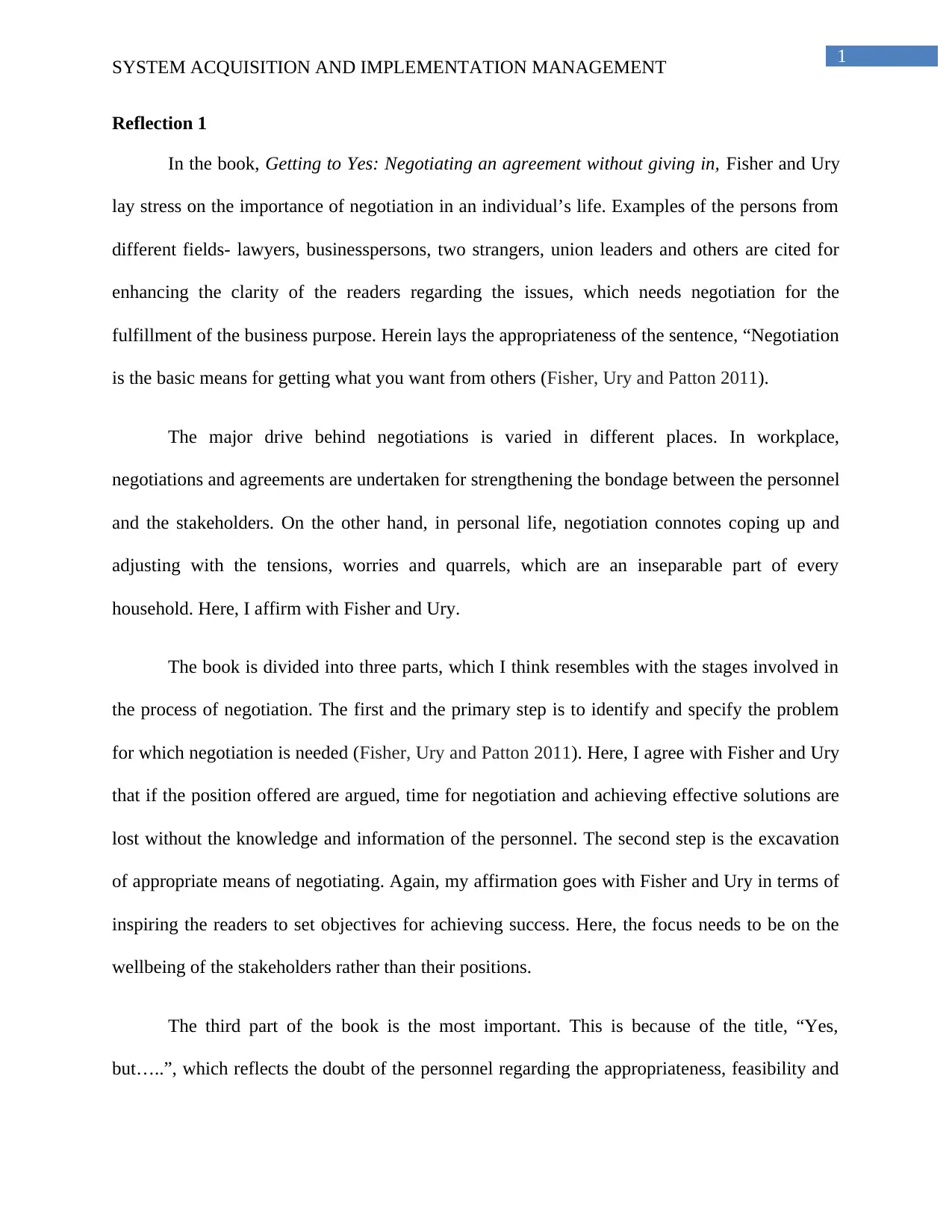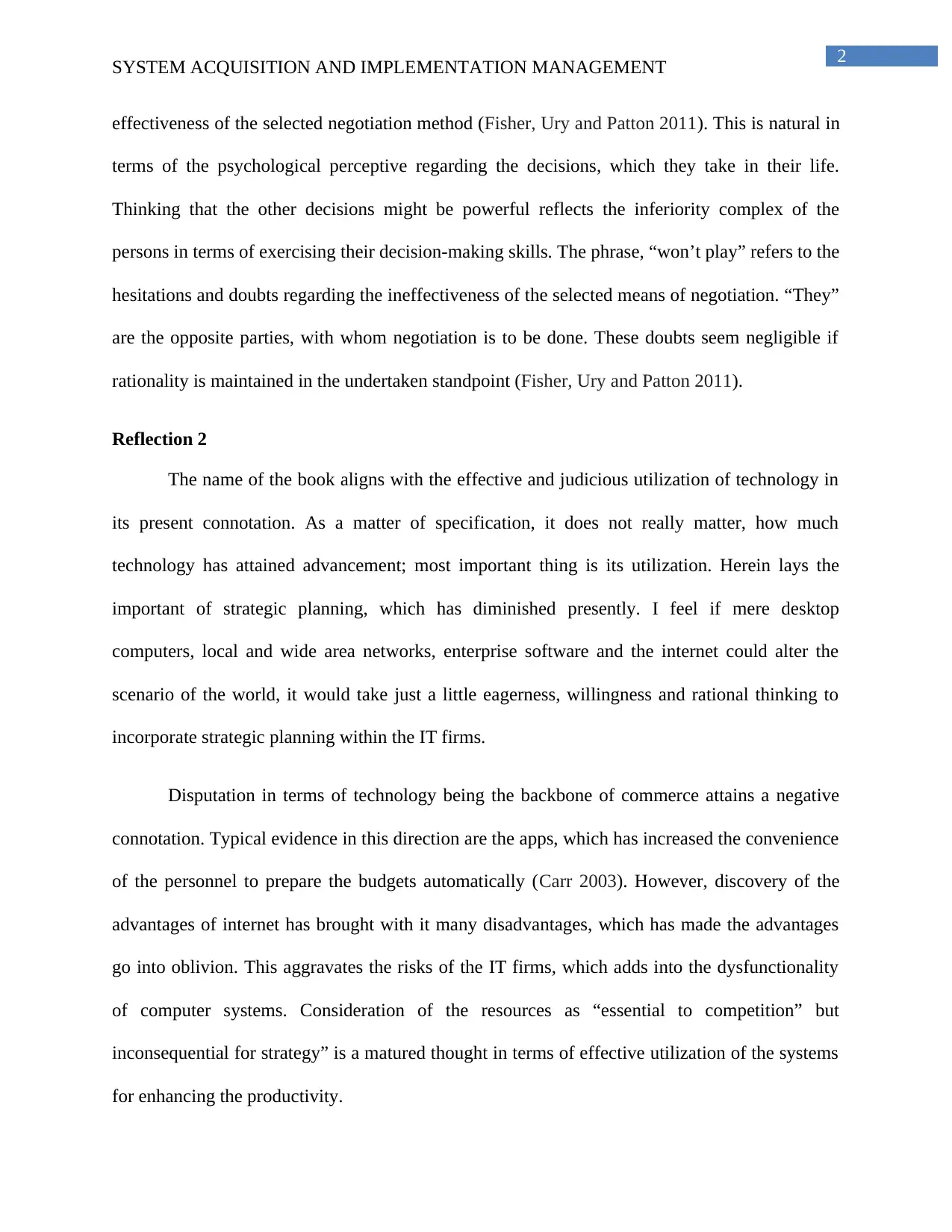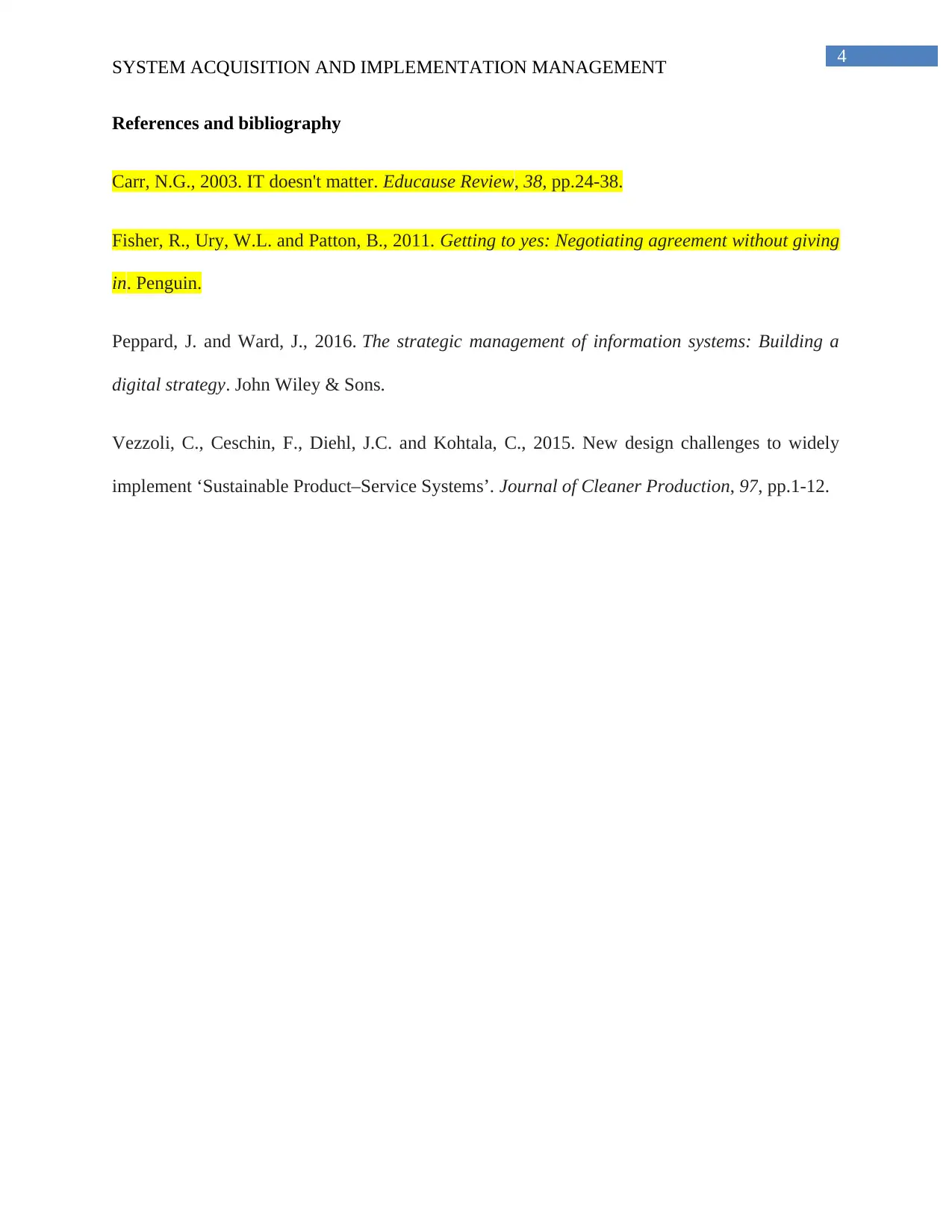Reflective Analysis: System Acquisition and Implementation Management
VerifiedAdded on 2020/04/21
|5
|981
|68
Journal and Reflective Writing
AI Summary
This reflective writing assignment delves into the student's understanding of system acquisition and implementation management, drawing upon concepts from "Getting to Yes" by Fisher and Ury and other relevant literature. The first reflection focuses on the importance of negotiation in various contexts, mirroring the stages of negotiation outlined in the book and applying them to workplace scenarios. The second reflection analyzes the strategic planning aspect of technology utilization, critiquing the notion that technology alone guarantees success and emphasizing the significance of strategic planning within IT firms. The student reflects on the balance between competition and strategic planning, highlighting the importance of long-term customer satisfaction. The assignment provides a critical analysis of how the theories apply to real-world situations and the importance of integrating strategic planning into IT and management practices.
1 out of 5







![[object Object]](/_next/static/media/star-bottom.7253800d.svg)